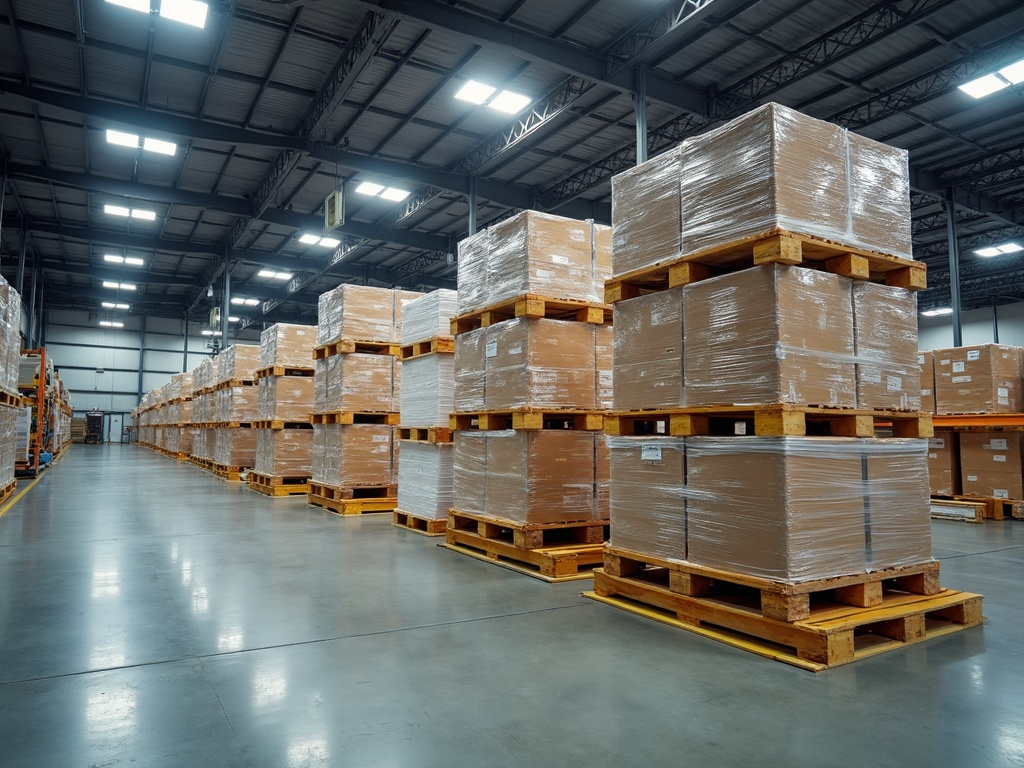Moving goods should feel calm, not risky. A strong pallet sets the tone. It keeps boxes steady, helps forklifts move cleanly, and saves products from dents and breaks. Good pallet choices also protect workers. This guide explains how to choose and use pallets so stacks stay stable and days run smoother.
Start With the Load
Everything begins with the load. Know the weight, the shape, and how the weight sits on the base. A wide, low stack is easier to keep steady than a tall, thin one. Heavy items belong on the bottom layer. Place the heaviest pieces over the deck boards, not in gaps. Keep the center of weight in the middle of the pallet. If the load leans to one side, the forks will feel it. That leads to wobble, scraped boxes, and slower work.
There are three weight numbers to keep in mind. Static load is the weight a pallet can hold when it sits on the floor. Dynamic load is the weight it can hold while a forklift or pallet jack moves it. Racking load is the weight it can hold when only two edges sit on rails. These numbers are not the same. Always plan for the lower one.
Pick the Right Material
Most pallets are wood or plastic. Metal pallets exist for very heavy work, but they are less common.
Wood is strong, easy to repair, and cost-effective. It handles heavy loads and can be fixed with simple tools. It can also splinter, take on moisture, and add dust if it gets old or damaged. For food or clean areas, choose higher grade timber and smooth decks.
Plastic is clean, light, and consistent. It does not absorb spills and is easy to wash. It works well in food, pharma, and wet areas. It can be pricier at the start. Some plastic designs bend more under point loads, so match the deck style to the product.
Choose a Size That Fits the Space
Size affects everything: aisle width, rack fit, and how many units fit in a truck. In Australia, a common square size is 1165 × 1165 mm, which suits many local racks and pallets-in-rack setups. Other regions use different base sizes, and export routes may call for a different footprint. When goods move across borders, match the pallet size to the receiving warehouse to avoid costly swaps.
Overhang is the enemy of safe stacking. Boxes that hang past the edges can crush or tear. They also raise the chance of impact in racks and on dock plates. Choose a pallet large enough for the base layer to sit fully on the deck, with straight edges and no sag.
Deck Style and Top Surface
Solid decks spread weight well and keep small items from slipping through. Slatted decks are lighter and cost less, but small cartons may sag between boards. For bags or soft goods, a denser top deck helps keep shapes even. A non-slip top surface adds friction, especially for plastic stretch wrap on smooth plastic decks. In wet zones, a textured surface helps grip.
Bottom deck style matters, too. A full-perimeter base improves racking strength and runs better on conveyors. Two-way pallets accept forks from two sides, while four-way pallets allow access from all sides. Four-way access speeds up docks and tight aisles.
Understand Ratings and Real Limits
A printed rating is a guide, not a promise. The real limit depends on the load shape, the rack type, and how the pallet has been used. A tall, narrow tower puts more stress on the top deck than a short, wide stack at the same weight. Point loads, such as pails or drums, can dent or crack high-use boards. Spread these loads with a slip sheet or extra layer board.
For racking, ask whether the pallet is safe on two rails or only on a full shelf. Wood stringer pallets with notches may need center support. Many plastic pallets are made for edge racking, but the model and deck thickness still matter. When in doubt, test with a sample and measure the deflection under real products.
Keep Forklifts and Pallet Jacks in Mind
Fork tips can punch through thin boards or plastic ribs. Set fork width to match the stringers. Enter straight, not at an angle. Lift smoothly. Sudden moves yank on the stack and break wrap. Leave space between pallets when placing them on the floor, so forks can enter without scraping.
For pallet jacks, watch the load wheel path. On some decks, small wheels can wedge into gaps. A bottom deck with full contact makes life easier for hand moves.
Simple Safety Checks Before Use
Short checks prevent big problems. Look for cracked or missing boards, loose nails, split stringers, crushed corner blocks, and oil or water on the top deck. Any sharp edge can cut wrap or skin. A broken stringer is not a small flaw; it changes how weight travels across the deck. Tag it for repair or remove it.
Check for mold or strong smells. Moisture weakens wood. If a pallet feels soft, do not trust it. In clean zones, keep a separate pool of higher grade pallets. Mark them and store them away from rough use.
Planning to Source Pallets
Sourcing should match the work, not just the price. New pallets give consistent strength and clean wood. Repaired or recycled pallets save money and reduce waste, but grades vary. Ask for clear grade rules and test examples with real loads.
For a quick way to review options, ranges, and sizes in the region, a practical starting point is to browse Pallet Products in Melbourne. This helps compare common materials and footprints before setting final specs.
Stacking That Feels Safe, Not Scary
Good stacking is simple, steady, and repeatable. Build the base layer tight with no gaps. Keep edges flush with the pallet. Use column stacking for strong boxes where edges line up in straight towers. Use interlocked stacking for softer boxes to resist sliding. Do not mix shapes in the same layer unless a layer board spreads the weight.
Aim for even height across the top. A flat top holds wrap better and resists sway. Avoid “pyramids” with a small cap layer. They look neat but give wrap less grip.
Wrap, Strap, and Protect
Stretch wrap is not decoration; it is a key part of stability. Use enough wrap to bind each layer and tie the stack to the pallet. Pull it snug but not so tight that corners cave in. Corner boards raise edge strength and help the wrap hold shape. For heavy or rigid loads, add straps through strap slots if the pallet provides them. Tuck strap ends so they do not snag on racks.
Store Pallets the Right Way
Neat storage keeps the next shift safe. Stack empty pallets in straight columns on level ground. Keep the stack height low enough that no one has to reach too high to add one more. Separate damaged pallets in a clear spot for repair. Dry storage is vital for wood. Wet pallets weigh more, grow mold, and twist as they dry.
Think About Cleanliness and Export Rules
Food and pharma sites need clean, traceable pallets. Plastic shines here, but clean timber with smooth boards can also pass audits. For export, many countries require ISPM 15 treatment for wood. That stamp shows the pallet was heat treated to control pests. Without it, border delays can stop shipments cold. For short trips or closed loops, a reusable plastic pool may make more sense.
Repair or Retire
A repairable pallet has solid stringers and blocks. Replacing a top board is simple. Straighten or replace bent nails so the deck sits flush. A pallet with split stringers, crushed blocks, or twisted frames should retire. It can enter a recycle stream and come back as mulch, chipboard, or plastic mix, depending on the material.
Cost, Value, and Total Time Saved
Safe pallets save time. They load faster, travel smoother, and need fewer rewraps. They cut product damage and returns. That value is often larger than the small price gap between grades. Track damaged-on-arrival rates, wrap use per pallet, and time per pick. When those numbers drop, the pallet choice is paying off.
Training That Sticks
Clear habits do more than long manuals. Teach teams to check the deck, set fork width, lift straight, and avoid overhang. Show why even layers matter. Praise clean stacks and tidy pallet rows. Simple signs near racks help: “No Overhang,” “Check for Cracks,” “Forks Straight.” Good stacks make a warehouse feel calm and safe.
Final Takeaways
Safe stacks start with the right base. Match pallet size and material to the load and the space. Keep overhang at zero. Know the difference between static, dynamic, and racking load. Check each pallet before use. Build even layers, wrap with care, and store pallets dry and straight. Small actions here prevent slips, breaks, and delays later. Share these steps with the team and keep refining them. A calm, steady flow is the best sign that pallets are doing their job.

